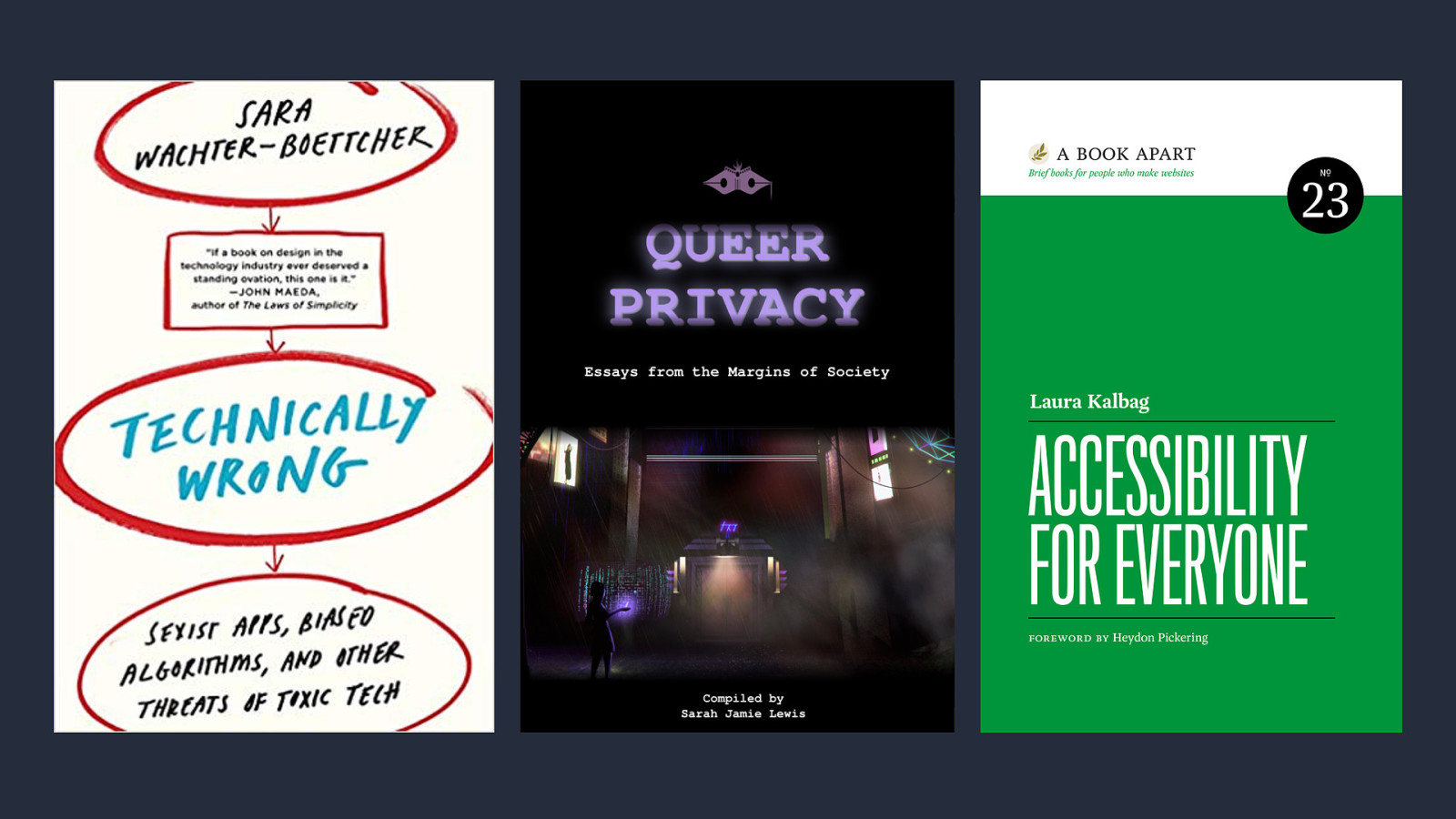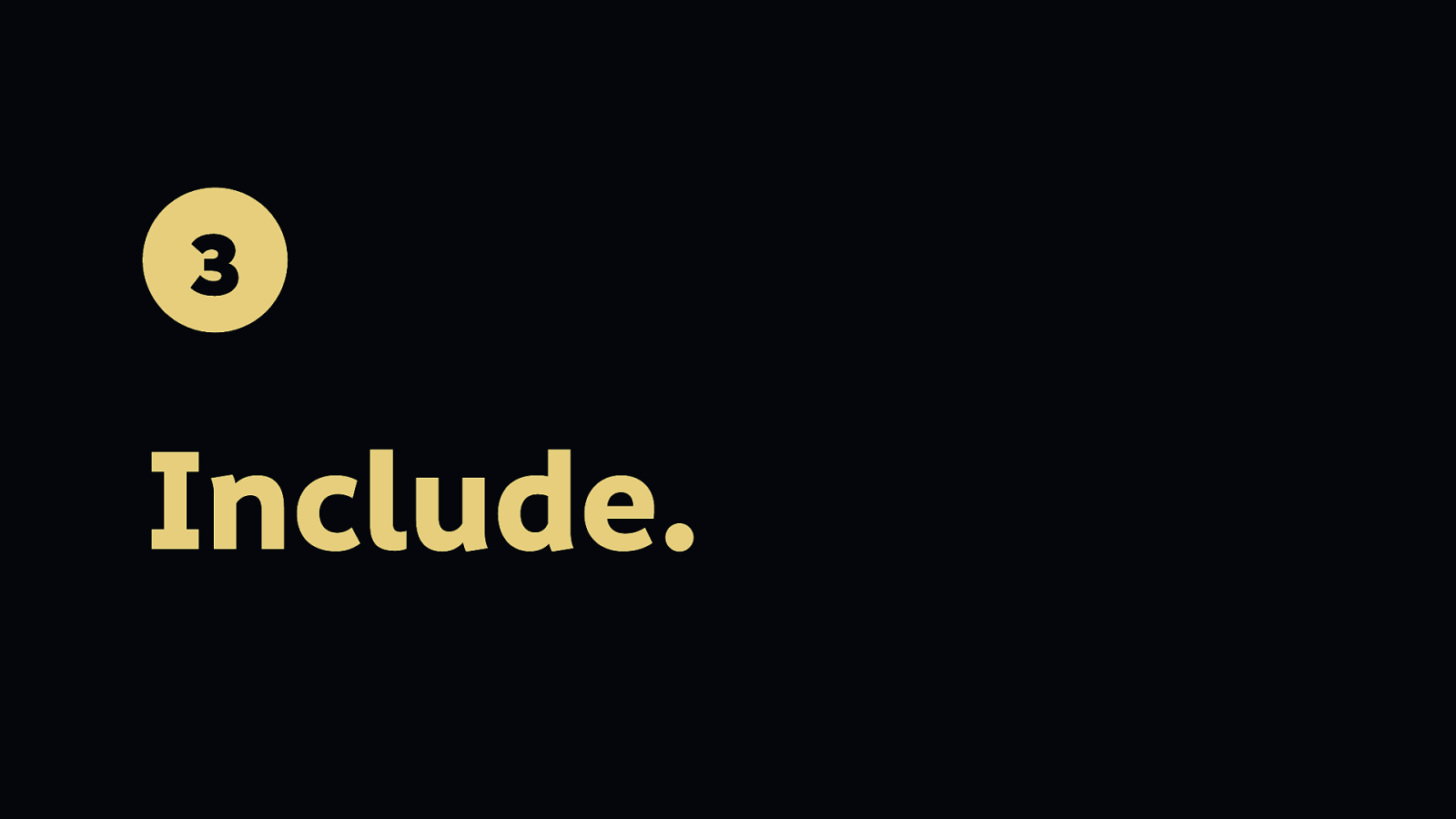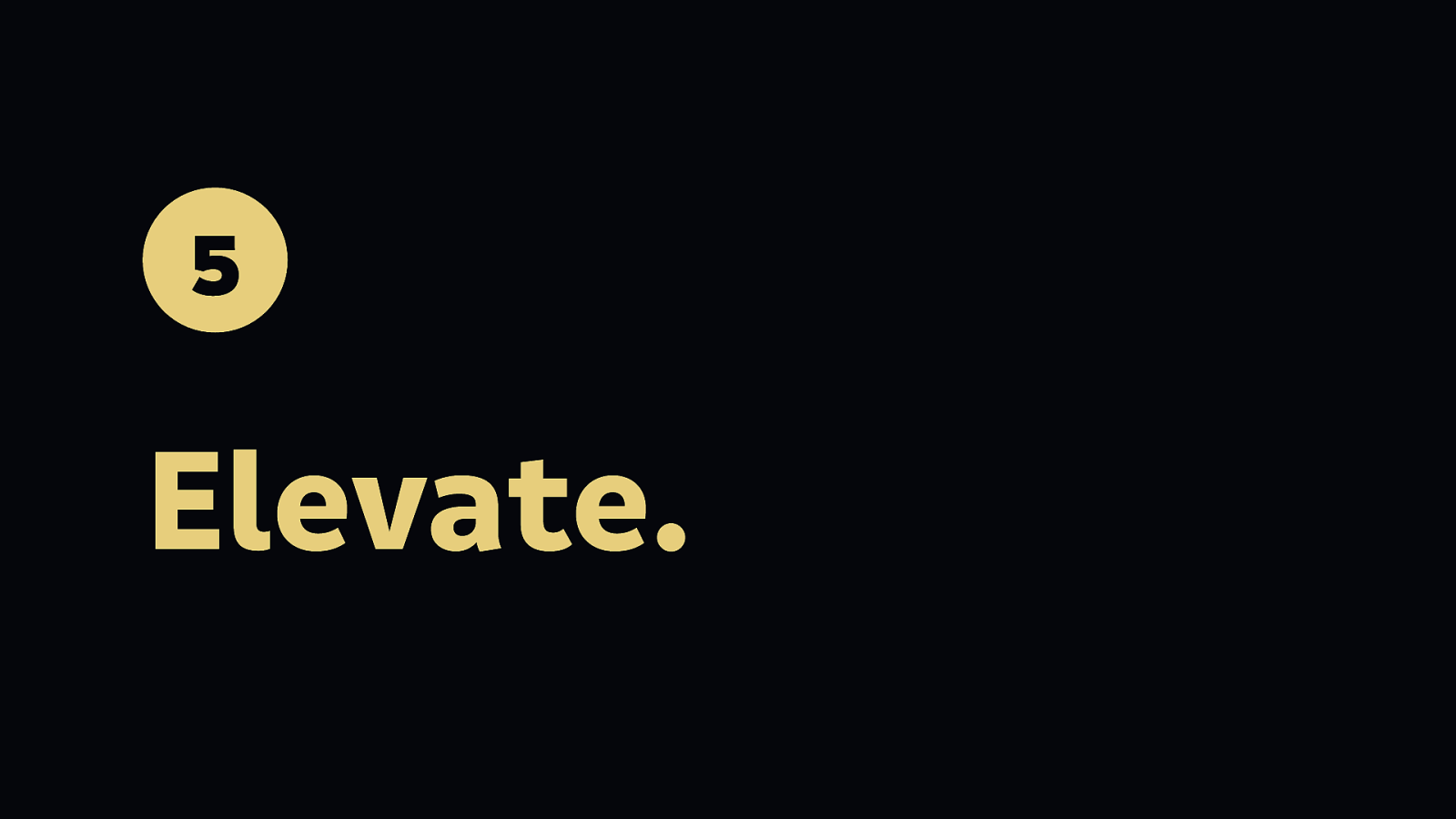People might actually use this
Laura Kalbag, ind.ie, laurakalbag.com
A presentation at Aracon in January 2019 in Berlin, Germany by Laura Kalbag

Laura Kalbag, ind.ie, laurakalbag.com

As I’ve only got 25 minutes to give this presentation, I am going to quickly run through my assertions. These are things I hold to be true, the reasons I am here today, and what we need to get past to build ethical decentralised technology.

We often use technology more than we use public infrastructure. In the last twenty years, internet-connected technology has gone from having a supporting role in our work and communications to the foundation of our social and labour infrastructure.

Surveillance capitalism, extracting and exploiting people’s personal information for financial gain, is the primary business model of mainstream technology. This is fuelled by venture capital which requires fast growth and reward, encouraging unethical business practices that harm marginalised people first.

Including racism, homophobia, transphobia, ableism, misogyny. We build technology in our image, we write algorithms with our biases. And because the majority of people building technology are cis straight white non-disabled men, the needs of others are at best ignored, at worst, exploited.

Because of the previous points, technology has a huge impact on society and democracy. Because technology has power, unethical business models, and exploits the vulnerable, it is having a detrimental effect on the world around us.

These are systemic issues. I’m not blaming you for everything. Technology is an amplifier of our societal problems.

That’s why we can’t pretend technology can fix issues with people. The best and most ethical technology in the world is not going to fix a broken planet or a toxic society.


We can’t tell people to quit Facebook if there’s no better alternative to Facebook. We can’t tell people to make the effort unless there’s somewhere else to go.

This is really hard. Because the tech industry is built upon venture capital and surveillance capitalism, going against the status quo is difficult. Funding is hard. Finding the tools is hard. Finding people to work on the projects is hard. Learning the best way to build things is hard.

And even if we start feeling like we’re getting there, and we’re doing ok, we must continually challenge our own work. We can’t sit pretty and comfortably. We have to continually question our own ethics, and whether we are doing the right thing or falling back into the motions of the status quo because it’s easier.

Doing a bit of research into your community over the last few days, and listening to talks today, I’ve made a little list of things I think are noticeable issues in decentralised technology here, as well as broadly:

If we start from the very beginning, we have to consider our intent. What are we building? What is it for?

The intent is the fuel inside a seed. It guides the growth of the product and gives us our early momentum.

Today we’ve heard from people building organisations, currencies, tools, and project management systems. There’s a common element to all of these projects and products…

When we think about what we are building, our intent, its purpose. Everything we are building is for people.

So we should design it and build it like a person might actually use it.

This starts with the funding model. Regardless of whether your product is for profit on not for profit. Because products cost money to keep alive. It might just be keeping a server running. It might be keeping the lights on or keeping your kids clothed and fed. In the current system, without funding, our product cannot exist.

The seed decides what our product will become. You can take that seed and plant it elsewhere, and while the conditions may change and affect the outcome, it is near-impossible to change a product if the funding model stays the same.

Your funding might be venture capital, where the goal is always growth and a big return on investment. Under venture capital, your product will always be at the whim of the investor.
Your funding might be sponsorship, where the sponsor gains credence for supporting you. Under sponsorship, your work will always be tied to the sponsor, and it limits your ability to challenge them.
Your funding might be small, which limits your progress and ability to compete in a market where everyone else has massive financial backing.

And it’s hard. It’s uncomfortable. It’s a constant state of trying to do better in a world that is pushing you to do exactly what everybody else is doing.

That’s why we at Ind.ie wrote the Ethical Design Manifesto. To cover the common concerns that often get missed by unethical technology, and are easy to forget if you’re just following the status quo.

So once we’ve got a funding model (an ethical one), we’ve got the seeds of our product.

If we think of our product as a fruit, the seeds are inside the core of that fruit.

In order to be ethical, our products must be decentralised.

Decentralising power as well as trust. Enabling us to own and control our own data in a meaningful way that is accessible to everyone. Not storing our data in one central location.

Our products must be inclusive.

Designed for the needs of our diverse population. Accommodating, flexible, affording the people who use our products choice. Not discriminative.
We need to ensure our products are easy to see, easy to hear, easy to understand, and easy to operate by as many people as possible. We need to test with assistive technologies so we don’t shut out disabled people who rely on them. We need to check our language to ensure we don’t exclude people from feeling like they belong. We have to accommodate stress and distraction as well as disability. Because many people using the technology will build will be doing so as a part of their already busy lives.

We need to make our products sustainable.

Economically and environmentally stable. Worth investing our time and resources because it won’t disappear tomorrow. Not-going-to-destroy-the-planet-with-our-proof-of-work sustainable.

We have to make our products private.

Enabling us to choose what we share with others. Encrypting our data so no-one else can access it. Understanding that data involving people is sensitive and liable to exploitation. We have to build exploitation-proof products.

It’s always worth saying this, because at every tech event I speak at, someone comes up to me afterwards saying they have a wonderful solution to help people monetise their own data. NO. It is not ethical to encourage this.

The reason it is not ethical is because consent is impossible. We can’t consent to the use of our data if we do not know exactly how it is used against us. We cannot possibly comprehend how metadata and derived data can provide infinitely more use and value to a business than is visible in the smallest scraps of information about us.

We must ensure our products are secure.

I’m sure this is high priority to the majority of people here. We need to protect our data from theft and loss. Because of its value.

We need to build products that are free and open, not proprietary.

Building freedom technology. So others can see the code, trust it or fork it. But also so we can build a strong commons of ethical technology where we can help each other solve the hard problems.

We have to make our products interoperable.

No lock-in, and not just because the GDPR (the EU’s General Data Protection Regulation) tells us we have to. If an organisation can be no longer trusted, we can export our data, and use it somewhere else. Enabling interoperability shows you can be trusted, and also promotes a healthy ecosystem where your product can work alongside other ethical technologies.

When a product is:
Then it respects human rights.

It can sound a bit high and mighty, but we have to keep respect for human rights, respecting and protecting civil liberties, in mind while building products. The tech industry to date has shown that human rights can be easy to forget!

“Compromise is the art of further marginalising minorities to preserve the status quo.” –Sarah Jamie Lewis
Tradeoffs are the enemy of ethical design. We cannot pretend that losing human rights is viable just to make a bit more money.

We need to keep working to reduce inequity already present in our society, and benefit the democracy we want for our people. With scandals like Cambridge Analytica using Facebook to influence elections and referenda, we can see that a little bit of tech like an ad can have a huge impact.

We have to know the important features of technology that will benefit human rights. Building products that are:

We have to build products that are:
This is generally the low bar on products in the tech industry nowadays.

It’s also known as making products that actually work, and do so in a reliable and convenient manner. Although this can still be hard!

The accessible bit is important. Who is your audience? Is it anyone that isn’t another tech-minded person in this tech-minded industry? Are you claiming that your audience is “everyone”? Then make it usable by a mainstream audience. Make your interface inclusive, guiding the person using it, being forgiving of mistakes. Make it easy to use and understand in different languages.

When a product is:
Then it respects human effort.

Finally, we come to the skin, of our fruit. Making products that are:
Because that respects human experience. It’s what makes people want to use our products. It’s what makes them competitive against unethical alternatives.

This delight is not about decoration, it is not superficial.

They are fun and light-hearted. They enable you to do things that enhance your relationships with the people around you.

The flesh of these products is rotten because the core is rotten, because the product does not respect your human rights.

Ethical design:


I like to end a talk with some proper actions, some proper stuff we can do, starting tomorrow or later today. Stuff that can help change our industry for the better.

Find a diverse range of marginalised voices and sources, and just listen to them. You don’t have to tell them you’re listening. Just listen to what they’re saying and learn about people who are different from you, who have different backgrounds, who live and work in different situations to you.

A few books I recommend to get you started (see resources page for links).
Each of these books will lead you to more places and people.

Take what you learn from others and introspect. Think about how you impact these people’s lives. It’s easy to get defensive when you think you might be someone who causes harm to others, particularly with your work. Try not to get defensive. Remember that you’re part of a bigger system that has influenced you to work in that way. Try to make amends for it. Try not to make the same mistakes again.
And for the love of all things, stop referring to your mothers and grandmothers when talking about people who find technology hard to use. It’s sexist.

You know those marginalised people I was referring to earlier? Include them in your work. Invite them on to your team. If you can’t afford another person, hire them as a consultant. Having people with diverse perspectives on your team will help you better identify potential problems and vectors for harm.
Though remember that one person does not represent every person like them. For example, I am just one white-ish British woman in her thirties. My thoughts and opinions do not represent every white-ish British woman in her thirties!
If you don’t think there are any marginalised people working in your field, you’re probably wrong. Seek people out, see if you can make an environment they might want to work within. Recruit people into the field if you can’t find them. They’ll offer way more insight than just another person who has the same background as you.

Support marginalised people working in your field. This could be financially, with work or by supporting their products, but it could also just be offering your verbal support. It’s hard working in ethical design. It’s hard struggling against the status quo. Tell someone you appreciate their work. Tell your friends about their work. Introduce likeminded people to one another.

The sign of being a true ally is elevation. Once you know marginalised people who are doing meaningful work, help put them where you want to be. Help them reach their goals because they are going to have to do a lot more to reach the position where you are today. Recognise that they may have a different agenda to you, help them do it anyway. They know what is best for themselves.
Don’t do it because you want to be seen to do it unless you are really trying to set an example. Elevate the people who will make technology better, because without them, we are doomed to repeat the same mistakes.
We need to support and elevate the most ethical solutions to the problems we’re trying to solve. We need to support each other and be supportive by being critical of each other. We need to be able to say “I think what you’re doing is dangerous and could cause harm.” We should all be able to build the greatest ethical technology we possibly can, and the only way we can do that is if we try.

Laura Kalbag, ind.ie, laurakalbag.com